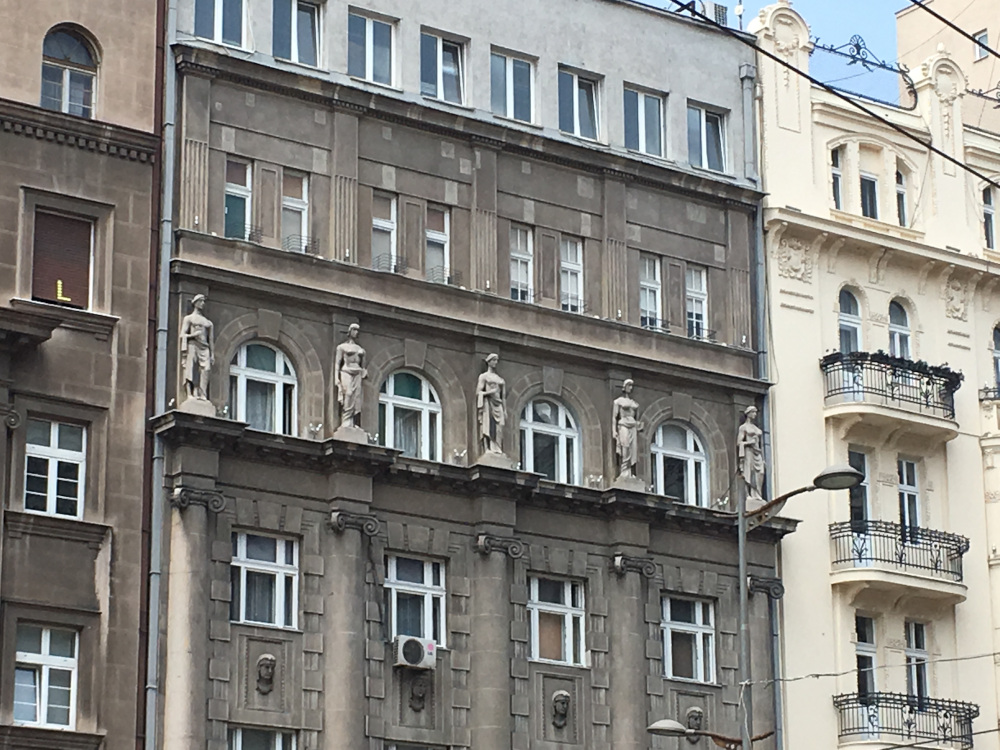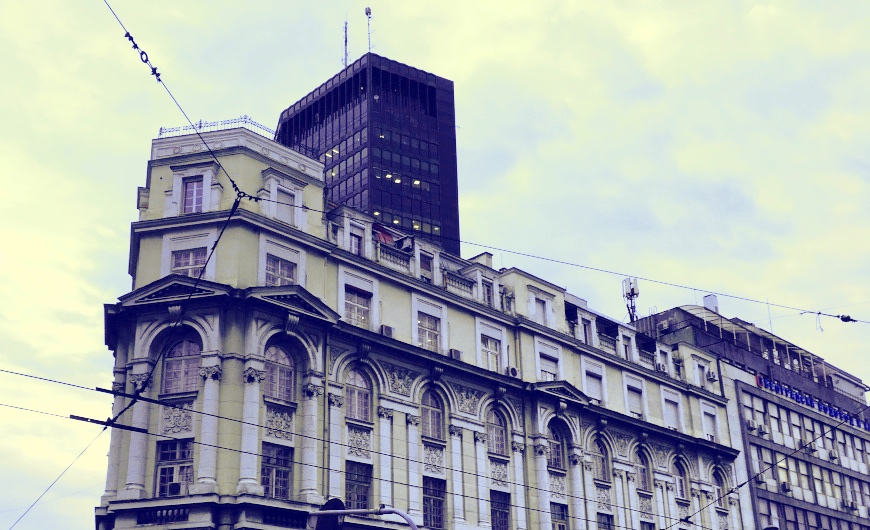When you walk the streets of Belgrade, you may find garbage on the pavement if you look down, or see gloomy people if you look straight forward, but raise your head, believe us, you'll be surprised.
The majority of edifices in Belgrade were constructed in the late 19th and throughout the 20th century. Being on the crossroads between East and West, often defying the interests of great powers, Belgrade picked up many influences over the time.
From the architectural point of view, here you can find precious examples of Medieval architecture, Serbo-Byzantine style, Neoclassicism, Academism, Neo-Renaissance, Secession, Brutalism, Oriental style, all mixed up with new (modern) architectural tendencies.

Richly ornamented buildings are all over the place, with reliefs and architectural sculptures (self-standing or integrated) on the walls or on the roofs. Even the native citizens of Belgrade are often surprised when they suddenly look up and notice highly decorated houses next to the place they grew up.
So, be careful, stranger, as you wander around the city, because you may be missing some really beautiful scenes that are posing for you just above your head.
 English (United Kingdom)
English (United Kingdom)  Srpski latinica (Srbija)
Srpski latinica (Srbija) 




















